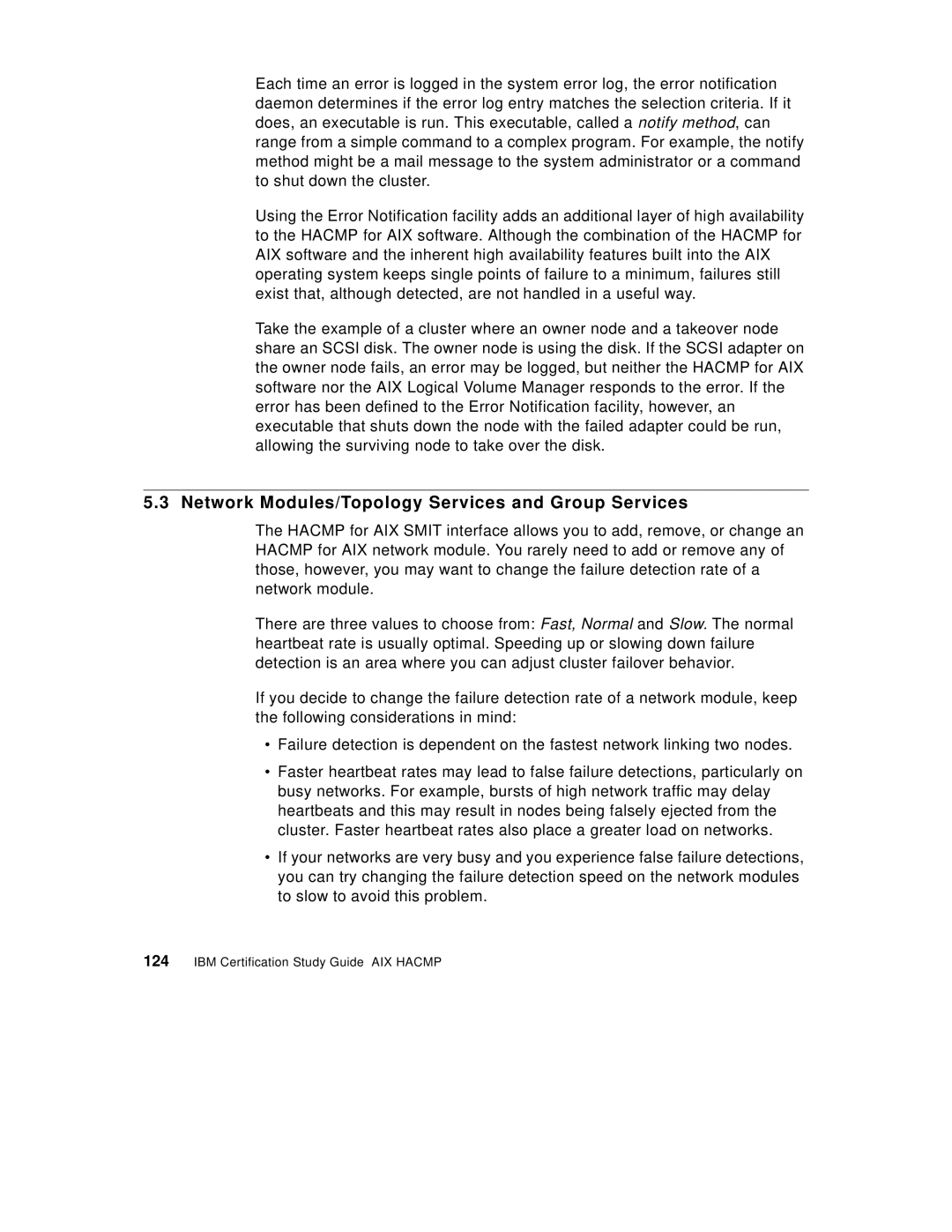Each time an error is logged in the system error log, the error notification daemon determines if the error log entry matches the selection criteria. If it does, an executable is run. This executable, called a notify method, can range from a simple command to a complex program. For example, the notify method might be a mail message to the system administrator or a command to shut down the cluster.
Using the Error Notification facility adds an additional layer of high availability to the HACMP for AIX software. Although the combination of the HACMP for AIX software and the inherent high availability features built into the AIX operating system keeps single points of failure to a minimum, failures still exist that, although detected, are not handled in a useful way.
Take the example of a cluster where an owner node and a takeover node share an SCSI disk. The owner node is using the disk. If the SCSI adapter on the owner node fails, an error may be logged, but neither the HACMP for AIX software nor the AIX Logical Volume Manager responds to the error. If the error has been defined to the Error Notification facility, however, an executable that shuts down the node with the failed adapter could be run, allowing the surviving node to take over the disk.
5.3 Network Modules/Topology Services and Group Services
The HACMP for AIX SMIT interface allows you to add, remove, or change an HACMP for AIX network module. You rarely need to add or remove any of those, however, you may want to change the failure detection rate of a network module.
There are three values to choose from: Fast, Normal and Slow. The normal heartbeat rate is usually optimal. Speeding up or slowing down failure detection is an area where you can adjust cluster failover behavior.
If you decide to change the failure detection rate of a network module, keep the following considerations in mind:
•Failure detection is dependent on the fastest network linking two nodes.
•Faster heartbeat rates may lead to false failure detections, particularly on busy networks. For example, bursts of high network traffic may delay heartbeats and this may result in nodes being falsely ejected from the cluster. Faster heartbeat rates also place a greater load on networks.
•If your networks are very busy and you experience false failure detections, you can try changing the failure detection speed on the network modules to slow to avoid this problem.
